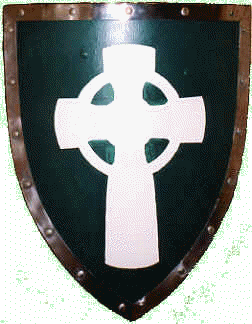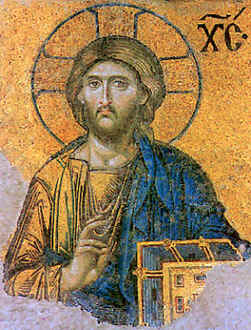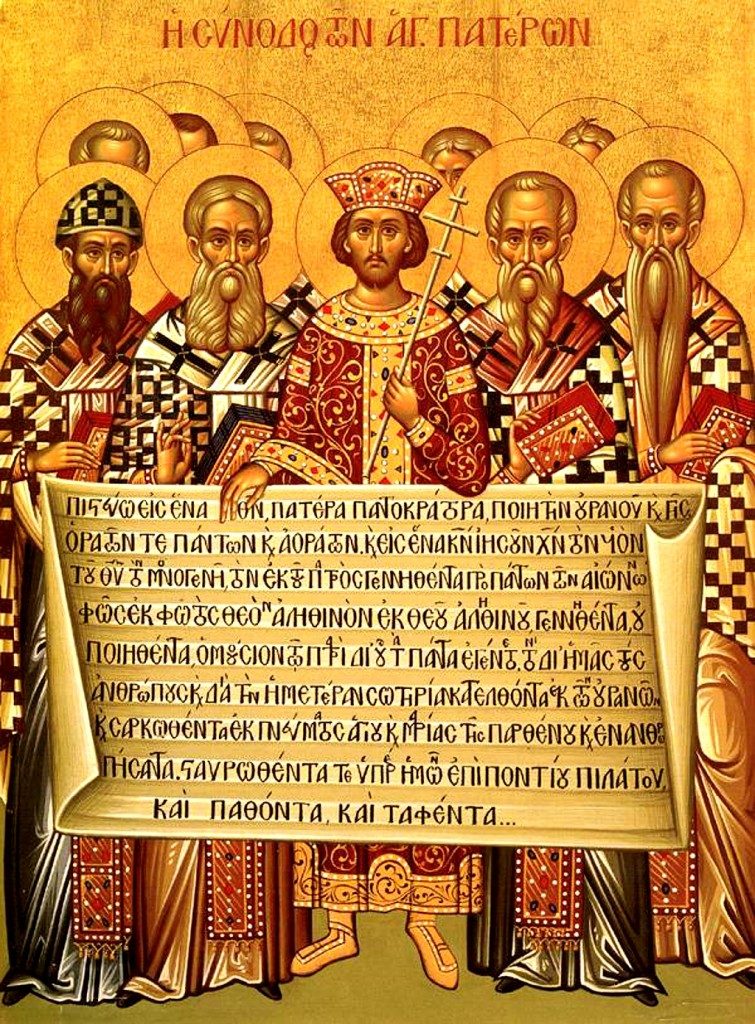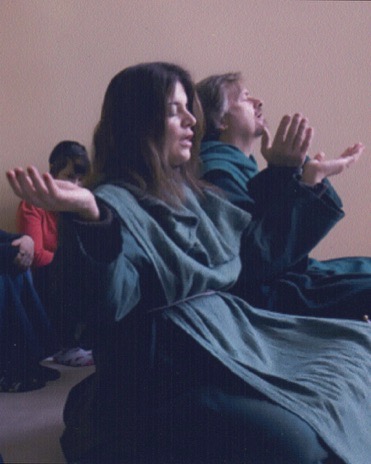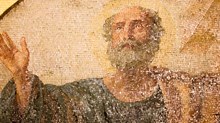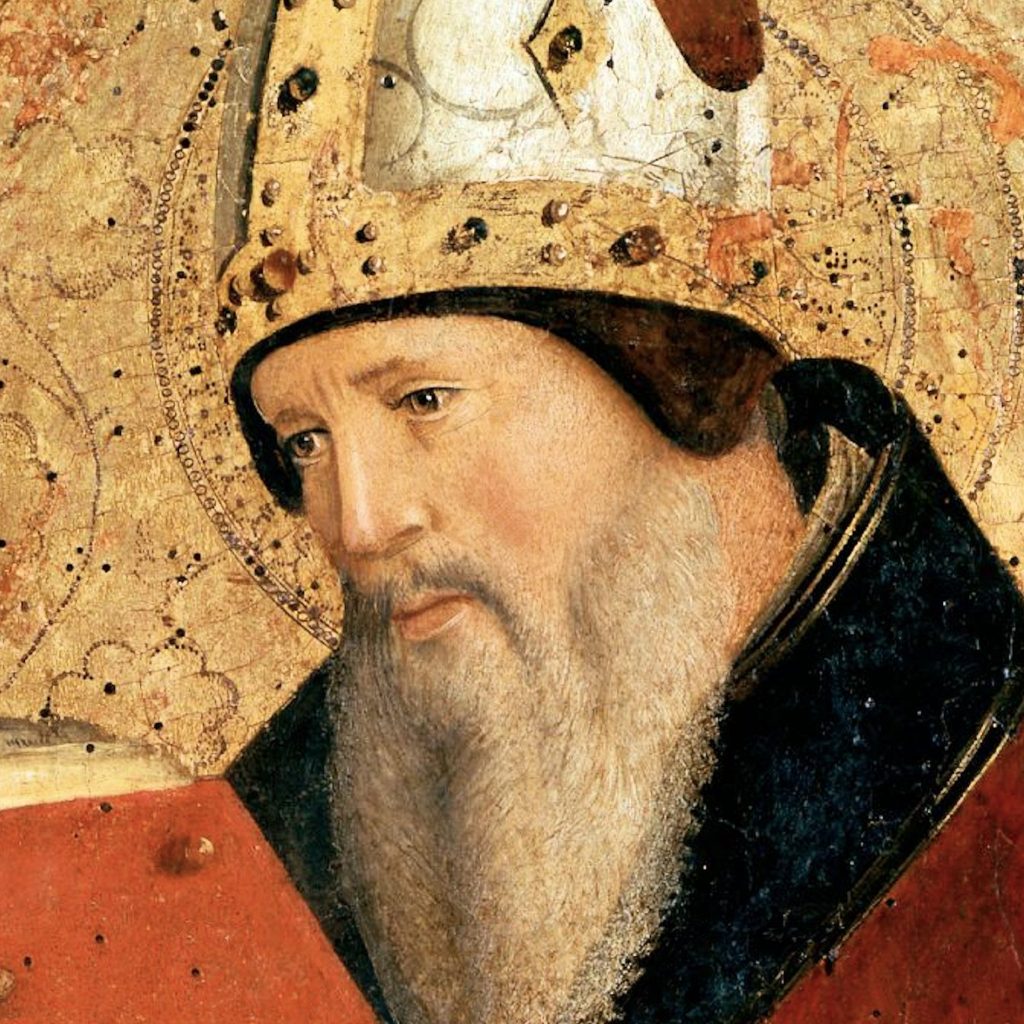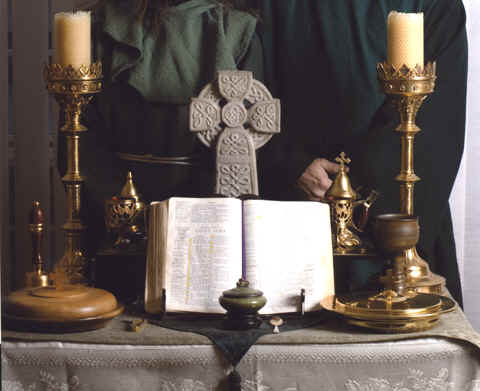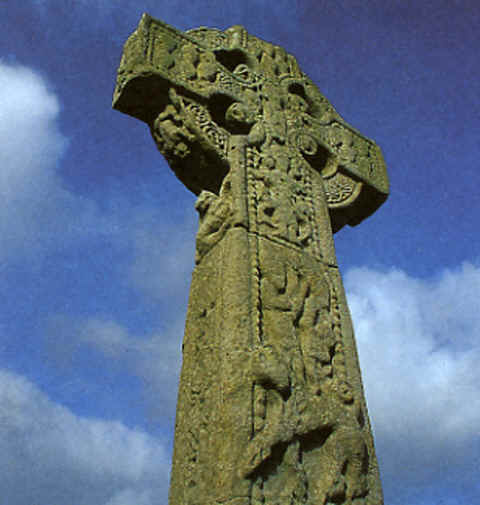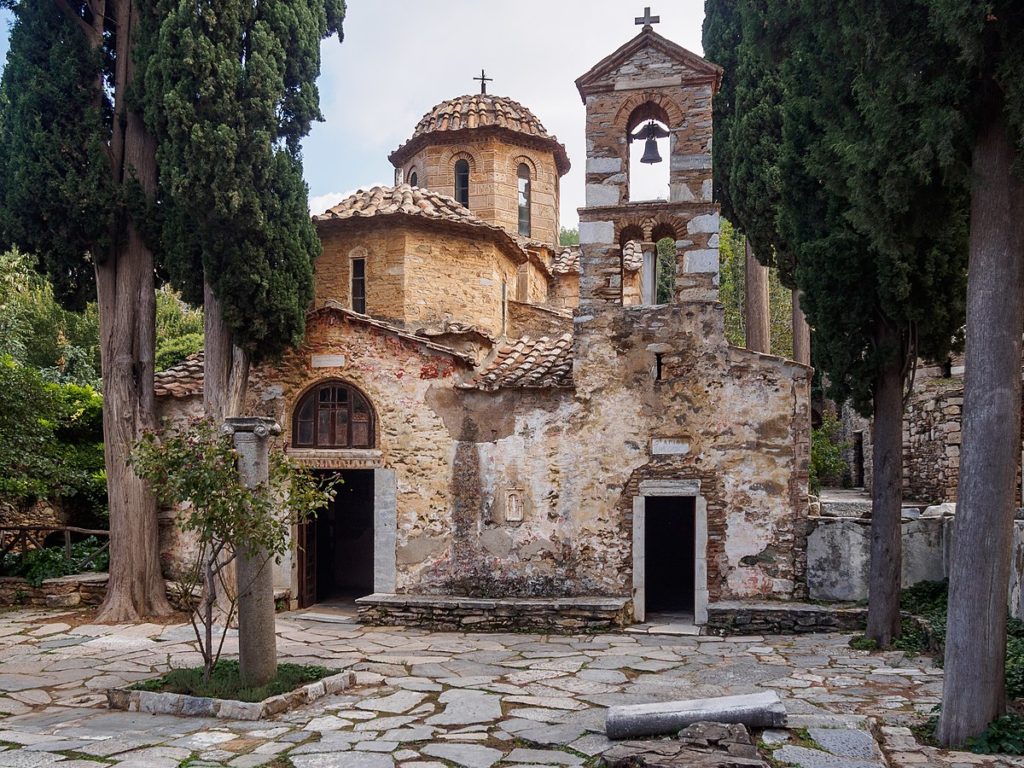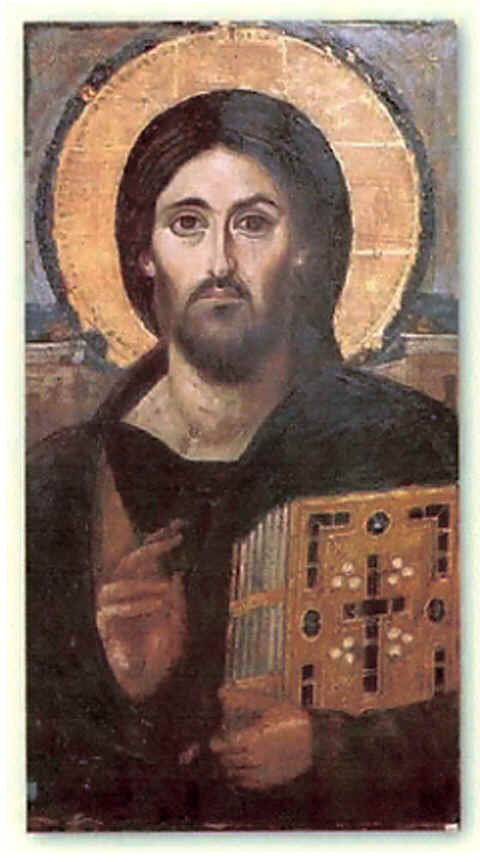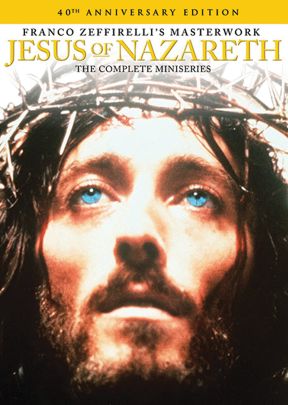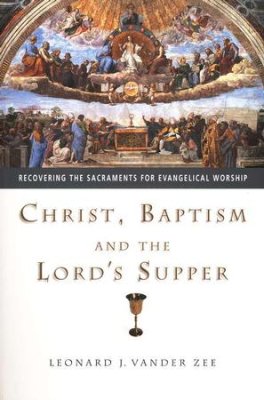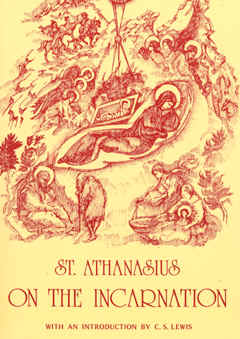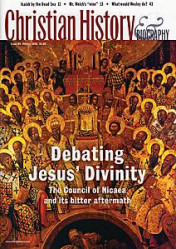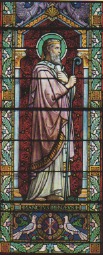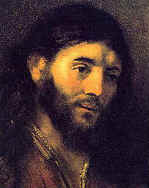Also Known as: The Symbol of Faith
ΤΟ ΣΥΜΒΟΛΟΝ ΤΗΣ ΠΙΣΤΕΩΣ

Eternally Begotten of the Father:
“A father begets, a mother conceives.
God the Son is begotten of the Father
and conceived of the Virgin Mary.
The begetting is an eternal relationship,
the conception is an event in time.”
-Ken Collins, “The Nicene Creed” ____________

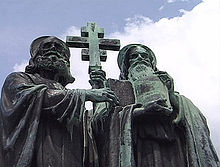
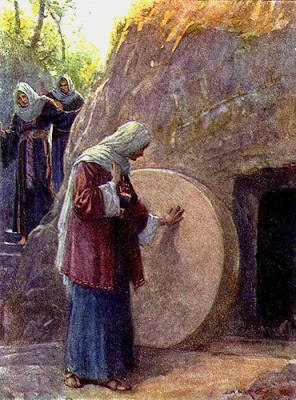

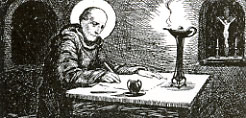

“Enter into His gates with thanksgiving, and into His courts with praise.”
-Psalm 100:4
We pray the Nicene creed Every Day – Either Saying it or Singing it
“In ainm an Athar, agus a Mhic, agus an Spioraid Naomh.”
“In the Name of the Father, and of the Son and of the Holy Spirit.” -In Gaelic

We make our own the profession of the faith that we carry in our heart…
we have the universal faith in the Creed, known to the faithful and committed to memory,
contained in a form of expression as concise as has been rendered admissible by the circumstances.”
-St. Augustine
Monk, Bishop of Hippo; (393 A.D.)
“That which has been believed everywhere, always, and by all.”
-Monk Vincent of Lerins (450 A.D.)
The Nicene Creed in Greek, but Written Out With Latin Characters:
Pistevo is ena Theon, Patera pantokratora, piitin ouranou ke yis, oraton te panton ke aoraton.
Ke is ena Kyrion Isoun Khriston, ton Yion tou Theou ton monoyeni, ton ek tou Patros yennithenta pro panton ton eonon.
Fos ek fotos, Theon alithinon ek Theou alithinou, yennithenta ou piithenta, omoousion to Patri, dhi ou ta panta eyeneto.
Ton dhi imas tous anthropous ke dhia tin imeteran sotirian katelthonta ek ton ouranon ke sarkothenta ek Pnevmatos ayiou ke Marias tis Parthenou ke enanthropisanta. Stavrothenta te yper imon epi Pontiou Pilatou ke pathonta, ke tafenta. Ke anastanta ti triti imera kata tas Grafas.
Ke anelthonta is tous ouranous ke kathezomenon ek dhexion tou Patros. _______________



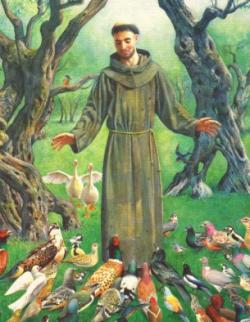
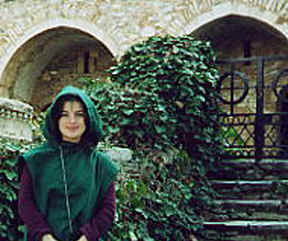
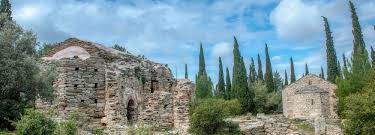

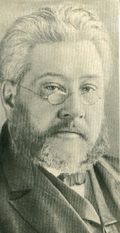
“There are, in truth, but two denominations upon this earth: the Church and the world.”
–Charles Spurgeon (1834-1892) English Baptist: “The Prince of Preachers”

THE APOSTLE’S CREED
_________________
I believe in God the Father Almighty,
Maker of Heaven and Earth;
And in Jesus Christ, His only Son, our Lord,
who was conceived by the Holy Spirit,
born of the virgin Mary,
suffered under Pontius Pilate,
was crucified, dead, and buried.
He descended into Hell.
The third day he rose again from the dead.
He ascended into Heaven,
and sits at the right hand of God the Father Almighty;
from there He shall return to judge the living and the dead.
I believe in the Holy Spirit, the holy universal church,
the communion of saints,
the forgiveness of sins,
the resurrection of the body,
and the life everlasting.
Amen. __________________________
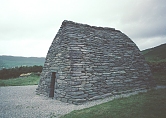

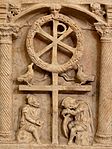





THE NICENE CREED ___________________________________
I Believe in One God: The Father Almighty, Maker of Heaven and Earth, and of all things visible and invisible.
And in one Lord Jesus Christ, the only begotten Son of God, begotten of the Father before all ages; God from God, 1 Light from Light, True God from True God; Begotten, not Made, being of One Substance with the Father; by Him all things were made.
Who, for us All, and for our Salvation, came down from Heaven, and was Incarnate by the Holy Spirit of the Virgin Mary, and was made Man; and was Crucified also for us under Pontius Pilate.
He Suffered and was Buried; and the third day He Rose Again, in accordance with the Scriptures; and Ascended into Heaven, and sits at the Right Hand of the Father.
And He shall Return, with Glory, to Judge the Living and the Dead; His Kingdom shall have No End.
And I Believe in the Holy Spirit, the Lord and Giver of Life; who Proceeds from the Father; 2 who with the Father and the Son Together is Worshipped and Glorified; who Spoke by the Prophets.
And I Believe in One Holy Universal 3 and Apostolic Church. 4 I acknowledge One Baptism for the Remission of Sins; and I look for the Resurrection of the dead, and the Life of the World to Come.
Amen. _________________________________

Ke palin erhomenon meta dhoxis krine zontas ke nekrous, ou tis vasilias ouk este telos.
Ke is to Pnevma to ayion, to kyrion, to zopion, to ek tou Patros ekporevomenon, to syn Patri ke Yio symproskynoumenon ke syndhoxazomenon, to lalisan dhia ton profiton.
Is mian, ayian, katholikin ke apostolikin Ekklisian. Omologho en vaptisma is afesin amartion. Prosdhoko anastasin nekron. Ke zoin tou mellontos eonos.
Amin. _________________________
“In essentials, unity. In non-essentials, liberty. In all things, love.”
-Rupertus Meldenius Lutheran Theologian
(1582-1651)
The Nicene Creed is the only Creed accepted in all three branches of Christianity:
Eastern Orthodox, Roman Catholic, and Protestant.
It was adopted by a General Council of the entire Church (Ecumenical) in 325 A.D.,
and revised (expanded) by a General Council of the entire Church in 381 A.D.
Traditional Liturgical worship always includes the Nicene Creed whenever there is Communion.
It is a corporate proclamation that corresponds to the Shema:
(“Hear O Israel, the Lord our God, the Lord is One.”) in Synagogue Liturgy.
HiStORicAl EXpLaNatORy fOOTNOtES:
The Greek word used in the Nicene Creed translated: “Maker” is “poieten”
–– a cognate of our word “poet,” but closer in meaning to the English word “artist.”

1 The phrase: “God from God,”
used in Western Church versions of the Nicene Creed (Protestant and Roman Catholic)
is not included in the Greek of the Nicene Creed of 381 A.D. (Niceno-Constantinopolitan Creed).
The original 325 A.D. version of the Nicene Creed does include it.
It agrees with: “true God from true God.”
____________________
2 The Filioque Clause:
Roman Catholic and many Protestant versions of the Nicene Creed often add at this point the phrase: “and the Son;”
This filioque clause (“filioque” is Latin for: “and the Son”) was inserted by the Western (Roman Catholic) Church in 589 A.D.
In the phrase: “We believe in the Holy Spirit, the Lord, and giver of life, who proceeds from the Father and the Son;“
the debate concerned whether the Holy Spirit proceeded only from the Father, or from the Father and the Son (filioque in Latin).
The phrase “and the Son”
was not in the Greek version of the Creed as accepted at Nicæa and Constantinople.
Eastern Orthodoxy has always used the Revised 381 A.D. Greek version of the Creed, resisting any changes.
A growing rift between Eastern and Western traditions eventually led to the “Great Schism” in 1054 A.D.
Click on the Photo of the Monastery Church (Directly Above) to go to our Webpage:
Nicene Creed: Scripture Basis (God’s Word Category)

The Eastern Churches have never used the version with the filioque clause,
while most churches that derive from the Western tradition (Protestants) use the creed with the filioque clause.
We have omitted it in the version we use, to return to the original wording of the Nicene Creed in Greek, as approved at the Council of Nicaea in 381 A.D.
The Church has widely used the Nicene Creed since the fifth century.
In some Protestant Churches it is recited every Sunday.
In others, like the Lutheran Churches, the Nicene Creed alternates each week with The Apostle’s Creed.
Eastern Orthodoxy uses only the Nicene Creed.
_____________________
3 The word “catholic” (with a small “c”) usually is used in the different English Versions of the Creed.
It is in general use by both Protestant and Orthodox believers.
The word “catholic” has come to mean “universal” or “general” (as in the “General” Epistles).
Martin Luther (and the Lutheran Churches) have substituted the word “Christian” at this point in the Creed, to avoid any confusion of the term with Roman Catholicism.
We have used the word “universal” for the same reason.
The actual Greek word: katholikos, literally means: “according to the whole.”
____________________
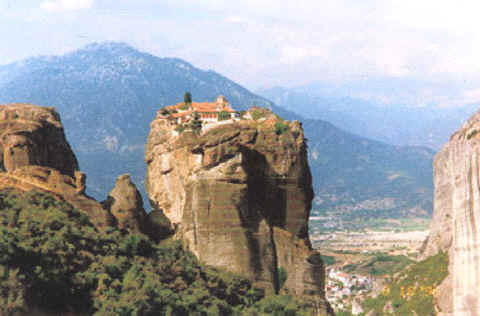
4 The word “Church” is used here for the actual Greek word “ecclesia,” which literally means: “assembly”.
It refers neither to a building nor an organization, but to all Christian believers:
both those on Earth (the Church Militant) and those in Heaven (the Church Triumphant).
The Holy Scriptures also refer to Believers as “The Body of Christ” and “The Bride of Christ.”
_____________________
Additional Notes On The English Version Posted Above:
Many slightly variant English Versions of the Nicene Creed are used by different Churches.
Even the various Orthodox
Communions in America, when using English Versions, use slightly differing English versions.
(The differences are due to the different words used in translation from the original Greek).
The English Version of the Nicene Creed posted above is the one we use.
It was compiled by Lay Monk Preston, based on the 1662 Anglican Book of Common Prayer Version.
A few updates have been made for greater clarity in modern English.
_____________________
Updates:
- “Ghost” to “Spirit”; “quick” to “living”; “men” to “all”, “spake” to “spoke”;“on” to “at”, “catholic” to “universal.”
- The word “worlds” was changed to “ages” (the Greek word is “aeons”).
- The “filioque” clause has been omitted.
- Note: The meaning of the word substance in the phrase:
- “of one substance with the Father,”
- has changed in meaning over the centuries.
- Some versions have therefore replaced it with the word: essence.
____________________
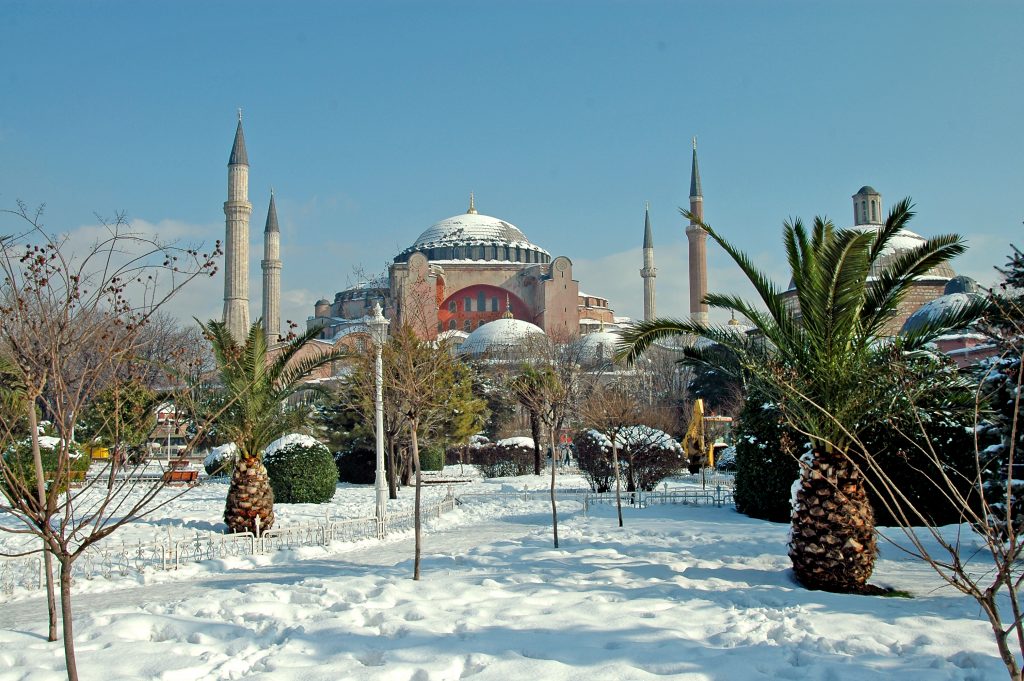
Hagia Sophia (Church of the Holy Wisdom) Istanbul, Turkey (currently being used as a Mosque)

St. iREnAEuS Of LyONS Writing AbOut the uNity Of the FAitH:

Against Heresies by St. Irenaeus of Lyons (c. 120/140 – 200/203 A.D.)
Chapter 10. Unity of the Faith of the Church Throughout the Whole World
“The Church, though dispersed throughout the whole world, even to the ends of the earth, has received from the Apostles and their disciples this faith:
(She believes) in one God, the Father Almighty, Maker of heaven and earth, and the sea, and all things that are in them;
and in one Christ Jesus, the Son of God, who became incarnate for our salvation;
and in the Holy Spirit, who proclaimed through the prophets the dispensations of God, and the advents,
and the birth from a virgin, and the passion,
and the resurrection from the dead,
and the ascension into heaven
in the glory of the Father…”
the ApOStLE pAuL - A NEW tEStAMENt cREEdAl StAtEMENt:
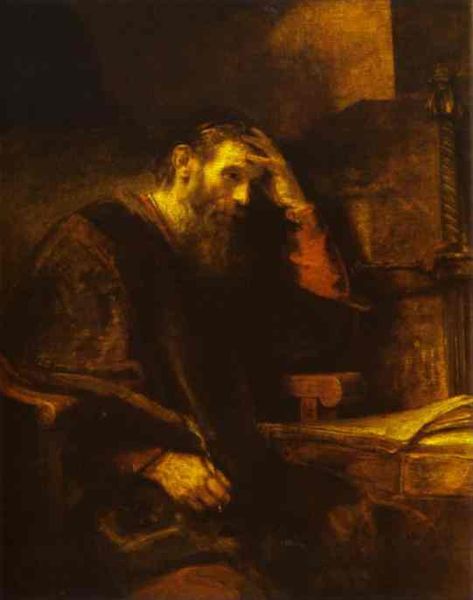
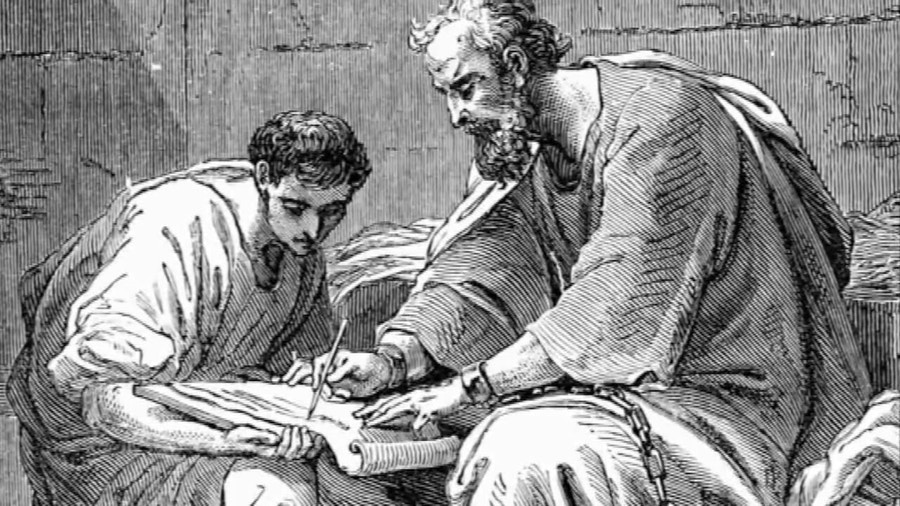
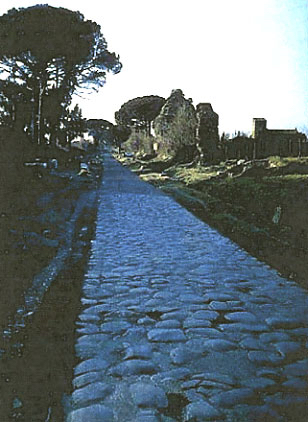
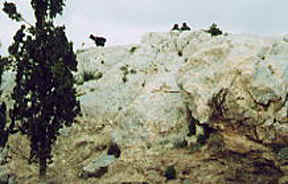
1 Corinthians 15:1-4
“Moreover, brothers and sisters, I declare to you the Gospel
which I preached to you, which also you have received, and in which you stand;
By which also you are saved, if you keep in memory what I preached to you; unless you have believed in vain.
For I delivered to you first of all that which I also received:
how that Christ died for our sins in accordance with the Scriptures;
And that He was buried, and that He arose again the third day, in accordance with the scriptures…”
______________________________
This Website: PrayerFoundation Evangelical Lay Monks ™ Built by: S.G. Preston Ministries ™
Copyright © 1999-2024 S.G. Preston. All Rights Reserved.
Photos & Text Copyright © 1999-2024 S.G. Preston. All Rights Reserved.
